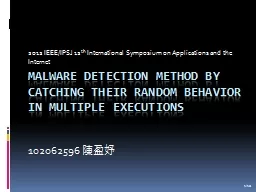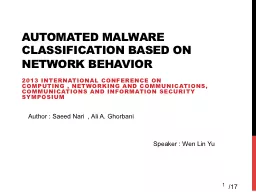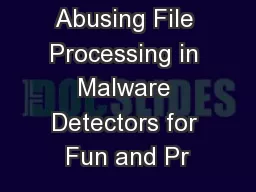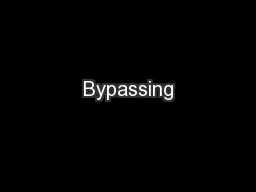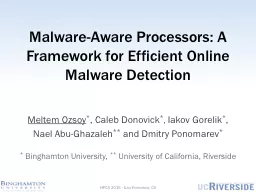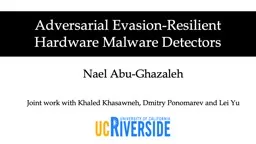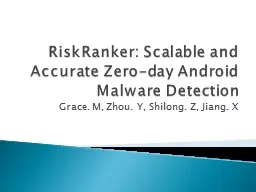PPT-Malware Detection Method by Catching Their Random Behavior
Author : alexa-scheidler | Published Date : 2016-04-09
2012 IEEEIPSJ 12 th International Symposium on Applications and the Internet 102062596 陳盈妤 1 10 Outline Introduction of proposed method Previous works
Presentation Embed Code
Download Presentation
Download Presentation The PPT/PDF document "Malware Detection Method by Catching The..." is the property of its rightful owner. Permission is granted to download and print the materials on this website for personal, non-commercial use only, and to display it on your personal computer provided you do not modify the materials and that you retain all copyright notices contained in the materials. By downloading content from our website, you accept the terms of this agreement.
Malware Detection Method by Catching Their Random Behavior: Transcript
Download Rules Of Document
"Malware Detection Method by Catching Their Random Behavior"The content belongs to its owner. You may download and print it for personal use, without modification, and keep all copyright notices. By downloading, you agree to these terms.
Related Documents

